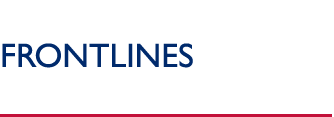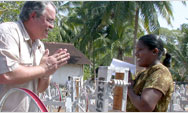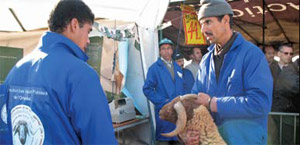  |
  |
 |
||||||||||||||||||||||||||||||
For the past three years, USAID helped herder cooperatives sign direct sales contracts for the Aid El Kebir holiday with Marjane, Morocco’s leading supermarket chain. USAID also introduced weaning and fattening techniques along with traceability systems to help the herders prepare their livestock for sale and respond to market demands for quality and food safety. In 2008 alone, seven cooperatives and four branches of Marjane supermarkets signed direct sales contracts for three consecutive Aid El Kebir holidays. “As we were prospecting the Oriental region for sales contracts, we learned of the USAID-funded IAA Program working on the competitiveness of the lamb meat value chain,” said Saad Bendidi, Marjane regional director for Rabat and Casablanca. “We visited the region and met the herder cooperatives working with the program. We found the quality, traceability, and the commitment we were looking for.” Bendidi added that Marjane sheep contracts for Aid El Kebir currently operate in Mohammedia, Oujda, and Casablanca, and that expansion to more stores was planned for 2009. ResultsIn 2008, the cooperatives sold over $1.7 million in sheep, a 70 percent increase over 2006 and 2007. Sales contracts with the supermarket chain Marjane resulted in increased revenues for cooperative members. “It is the first time that I sell my sheep in a supermarket like Marjane. I have never been there. I only saw it on TV,” said Brahim Kebdi, one of the sheep herders. “It could not have been done without USAID assistance,” the sheep herder added. “Thanks to the trainings we got, we produce quality sheep. We are also happy with the transparent transactions and direct interaction with customers.” Word of the increased sales has reached herders from other regions of Morocco, who are now requesting USAID assistance. “In the beginning we were reluctant to enter into sales contracts due to a lack of trust,” said Bachir BouAich, president of a cooperative from the Rhamna region. “After visiting the herders in the Oriental region, we were convinced to try. I can say that it is a very comforting situation when everybody is a winner.” To date, USAID-assisted herders have fattened more than 10,000 lambs as part of the early weaning and fattening program. The program also has encouraged widespread adoption of management techniques by herders throughout Morocco. “USAID’s assistance to the red meat industry was a strategic choice made in 2005,” said Bahaji Jaouad, the Agency’s agriculture program manager. “Today, the Ministry of Agriculture and Fisheries has started implementing the royal initiative ‘Green Morocco Plan,’ in which the red meat sector has been identified as being among the three strategic sectors to be developed in Morocco in general and the Oriental region in particular.” Livestock brings an average annual value of approximately $1 billion to Morocco (10 billion dirhams), accounting for 25 percent to 30 percent of the country’s agricultural Gross Domestic Product. ★
FrontLines is published
by the Bureau for Legislative and Public Affairs To have FrontLines delivered to you via postal mail, please subscribe. Material should be submitted
by mail to Editor, FrontLines, USAID, To view PDF files, download |
||||||||||||||||||||||||||||||||
 Mission of the Month: Morocco
Mission of the Month: Morocco